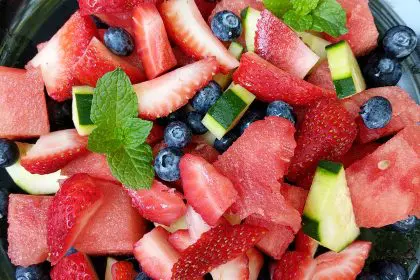The dialogue around ultra-processed foods continues to shift as research reveals a more complex picture than previously understood. While studies link many processed foods to health concerns like heart disease and obesity, certain items in this category offer substantial nutritional benefits. This evolving understanding challenges the common perception that all processed foods harm health, opening new perspectives on balanced nutrition.
Beyond simple classifications
Through extensive modification, ultra-processed foods often contain added sugars, fats, sodium, and artificial components. However, registered dietitian Bonnie Taub-Dix emphasizes that this broad category includes items with varying health implications, requiring careful evaluation rather than outright rejection. This nuanced approach helps consumers make informed choices based on individual products rather than categorical assumptions.
Current research insights
The Lancet Regional Health—Americas published research in 2024 that transformed the understanding of ultra-processed foods’ impact on health. Their findings indicate that whole grain bread, cold cereals, and yogurt show no meaningful connection to cardiovascular problems, unlike sweetened drinks and certain processed meats. These results suggest the need to evaluate processed foods individually rather than condemning them as a group.
The processing advantage
While mindful consumption remains essential, specific ultra-processed items contribute valuable nutrients to daily meals. Whole grain bread provides fiber and B vitamins that aid digestion and heart health. Success in selecting these products lies in identifying whole grains as primary ingredients while avoiding unnecessary additives. The processing of whole grains can actually enhance nutrient availability, making certain nutrients more accessible to the body.
Quality in meat processing
Modern approaches to meat processing have yielded better alternatives, especially in grass-fed products. These options typically offer increased omega-3 fatty acids compared to standard varieties, highlighting the importance of ingredient sourcing in processed foods. The processing methods used can preserve these beneficial compounds while improving shelf life and convenience.
Plant-based processing benefits
Commercial hummus illustrates the potential benefits of processed foods. Though some brands include preservatives, many options deliver substantial nutrition through chickpeas’ natural fiber and protein content, enhanced by olive oil’s anti-inflammatory properties. The processing of chickpeas actually makes their nutrients more bioavailable while creating a convenient, readily consumable form.
Dairy processing evolution
Yogurt production demonstrates how processing can enhance food’s nutritional profile. The fermentation process creates beneficial probiotics while maintaining calcium and protein levels. Studies suggest regular consumption supports metabolic health and reduces diabetes risk, particularly when choosing unsweetened varieties. The controlled fermentation environment ensures consistent probiotic benefits that might be difficult to achieve through home preparation.
Convenience with nutrition
Canned beans exemplify nutritious convenience foods, offering concentrated plant protein, fiber, and minerals. Simple preparation methods maintain their benefits while reducing sodium content, making them valuable pantry staples. The canning process preserves nutrients effectively while making these healthy foods accessible year-round.
Selective consumption strategies
Successfully incorporating ultra-processed foods requires understanding individual products rather than applying broad rules. Examining ingredients, processing methods, and overall nutritional content helps identify beneficial options. The key lies in selecting products that undergo necessary processing while maintaining their inherent nutritional benefits.
Processing innovations
Food science continues developing methods that maintain or improve nutritional content while providing convenience. These advancements suggest future processed foods may offer enhanced benefits while meeting modern lifestyle needs. Innovation in food processing focuses on preserving natural nutrients while eliminating unnecessary additives.
Reading labels effectively
Understanding product labels becomes crucial when selecting processed foods. Key considerations include the order of ingredients, added sugar content, and presence of artificial additives. Products with shorter ingredient lists and recognizable components often represent better choices within the processed food category.
Cultural considerations
Different cultural traditions incorporate various forms of processed foods, many of which offer significant health benefits. These traditional processing methods often enhance both nutrition and preservation, demonstrating that not all food processing diminishes health value. Understanding these cultural contexts helps broaden perspectives on processed foods’ potential benefits.
Environmental impact
The relationship between processed foods and environmental sustainability presents another important consideration. Some processing methods can reduce food waste and extend shelf life while maintaining nutritional value. This aspect adds another dimension to evaluating processed foods’ role in modern diets.
Balance in modern eating
Contemporary life often requires including processed foods in daily meals. By selecting products thoughtfully, these items can support rather than compromise health goals. Understanding which ultra-processed foods provide genuine benefits enables informed choices that combine nutrition with practicality. The key lies in maintaining balance and making conscious selections rather than completely avoiding processed options.
Future perspectives
As research continues and processing technologies advance, our understanding of ultra-processed foods will likely become even more nuanced. This ongoing evolution in food science and nutrition research promises to reveal more about both benefits and limitations of various processing methods, helping consumers make increasingly informed choices about their food selections.











